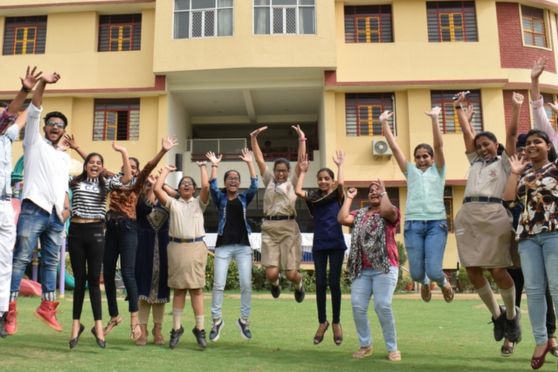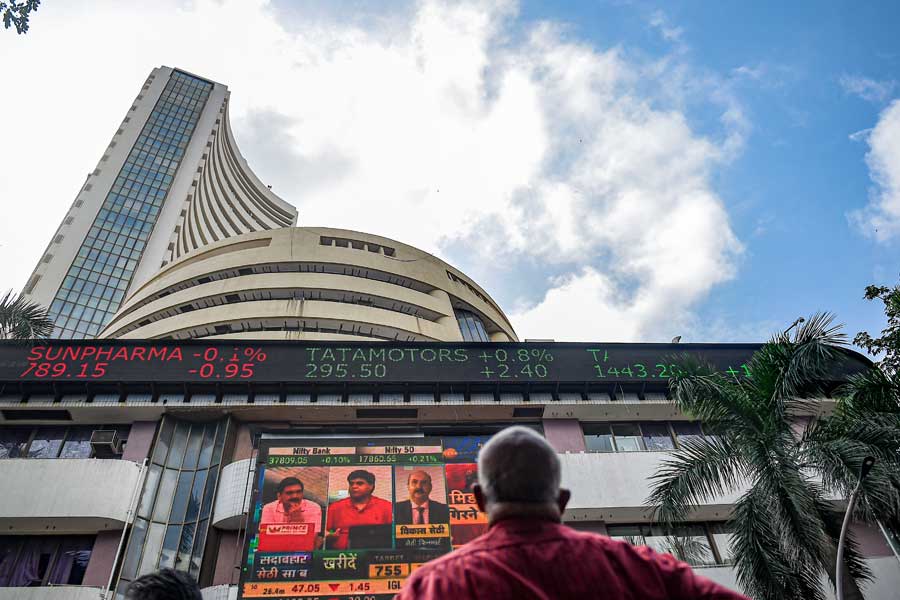The Niti Aayog, the government’s apex public policy think tank, has claimed that nearly 24.82 crore Indians have been lifted out of poverty over the last decade but several economists have contested the methodology used.
A Press Information Bureau (PIB) release says the Niti Aayog’s discussion paper, “Multidimensional Poverty in India since 2005-06”, released on Monday, shows a decline in multidimensional poverty in India from 29.17 per cent in 2013-14 to 11.28 per cent in 2022-23. It adds that this comes to 24.82 crore people stepping out of poverty.
“The Multidimensional Poverty Index (MPI) is a globally recognised comprehensive measure that captures poverty in multiple dimensions beyond monetary aspects,” the release says.
“MPI’s global methodology is based on robust Alkire and Foster (AF) method that identifies people as poor based on universally acknowledged metric designed to assess acute poverty, providing a complementary perspective to conventional monetary poverty measures.”
Niti Aayog’s paper claims that India is likely to achieve the Sustainable Development Goal (SDG) of “halving multidimensional poverty” well before 2030, the release says. (According to the UN, the SDG target is to eliminate extreme poverty by 2030.)
After the release of the paper, Prime Minister Narendra Modi tweeted: “Very encouraging, reflecting our commitment towards furthering inclusive growth and focusing on transformative changes to our economy. We will continue to work towards all-round development and to ensure a prosperous future for every Indian.”
However, several economists said the MPI — which mainly measures possessions and access to certain services — is a poor method of estimating poverty, traditionally measured through household expenditures on certain goods and services.
When the Planning Commission — the predecessor of the Niti Aayog — traditionally prepared poverty estimates, its expert committees always recommended a “poverty line” linked to specific expenditures.
This poverty line was applied against data on household consumer expenditures, obtained by the then National Sample Survey Organisation (NSSO), now renamed the National Statistical Organisation (NSO), a wing of the statistics and programme implementation ministry.
The survey captured how much money a family spent on food, shelter, clothing, health, education, transport and entertainment, among others.
In 2005, the UPA government set up a committee under the economist Suresh Tendulkar to update the method of measuring the poverty line. The committee considered expenditures on calorific consumption and on a few other parameters such as the minimum nutritional, health, and educational requirements.
It suggested that a person be considered poor if he or she spent less than Rs 447 a month (rural areas) and Rs 578 a month (urban areas) on the relevant goods and services (according to the 2004-05 price index).
The committee estimated that 37 per cent people — 26 per cent in urban areas and 42 per cent in rural areas — lived below the poverty line (BPL) in 2004-05.
The last poverty estimate was done in 2011-12 by applying the Tendulkar methodology after price indexation, and based on the last consumption pattern data obtained from the latest NSSO survey. According to that estimate, 21.9 per cent Indians were BPL in 2011-12.
The next poverty estimate should have come after five years but hasn’t been conducted yet. The government has not released the Household Consumer Expenditure Survey report for 2017-18, citing high divergence between the survey findings and "administrative data".
According to a report in Business Standard, the NSO survey — conducted between July 2017 and June 2018 — found a fall in consumer spending for the first time in more than four decades.
In 2012, the UPA government had set up a committee under C. Rangarajan to review the poverty estimation methodology. The committee submitted its report in June 2014, weeks after the Narendra Modi government came to power.
The new government set up another task force in 2015, under then Niti Aayog deputy chairman Arvind Panagariya, to recommend a definition for poverty and ways of measuring it. Instead of doing either, the task force suggested that another expert panel be set up. This was not done.
A retired Indian Economic Services officer, K.L. Datta, who has authored the book, Growth and Development Planning in India, said the MPI is not used as a measure of poverty and deprivation.
"The MPI simply tells us the percentage of people unable to access certain facilities provided by the government or (that are) available to them," Datta said.
"It is not used by planners and policymakers to fix targets, nor is it used as an input to make plans for poverty reduction. To sum up, the MPI does not represent poverty. The government is trying to project the MPI estimate as a substitute for the poverty ratio. This is not right."
Datta said consumption expenditures are not used in the computation of the MPI. While measuring living standards, the MPI takes account of cooking fuel, sanitation, drinking water, electricity, housing and assets such as radio sets, TV sets, telephones, computers, animal carts, bicycles and the like.
Economist Sunil Ray, former director of the A.N. Sinha Institute, Patna, said the Niti Aayog’s claim about achieving the SDG much before 2030 was mere "sound and fury".
He said SDGs can be achieved only when people manage their needs themselves instead of depending on the government. However, the government has been continuing its food subsidy programme, the National Food Security Act, which benefits over two-thirds of the population.
"How can a nation achieve SDG when its government has to ensure the survival of more than two-thirds of its population? The government is giving this freebie because the people are not self-dependent," Ray said.
He underlined that credible data critical to poverty estimation — including the Household Consumer Expenditure Survey findings — were unavailable in many areas.
"What the government is trying to do is steal the show somehow. On the face of facts, such claims do not stand," Ray said.
Economist Jean Dreze wrote to this newspaper that the MPI has limitations as a methodology and cannot be used as a substitute for the traditional method of poverty estimation (based on expenditure data).
"(The) MPI does not include any indicator of short-term purchasing power. Thus, we must read MPI data along with other information, including recent evidence of sluggish growth in real wages," he wrote.
"MPI data can complement but not substitute for poverty estimates from consumer expenditure surveys that are long overdue."
Asis Banerjee, economist and former vice-chancellor of Calcutta University, questioned the MPI’s efficacy as a yardstick to measure poverty while also saying that the current government cannot claim credit for the improved MPI figures.
"It (MPI) has been declining for quite some time now and not just in the last nine years. Most studies show the credit for this goes to measures initiated before the change of government at the Centre in 2014," he wrote in an email response.
He highlighted that even going by the AF method of estimation, it had been seen that the rural areas' contribution to the MPI had not only remained high but increased over the last decade or so. Besides, there has been no decline in inter-caste and inter-religious disparities, he wrote.
As for flaws in the MPI methodology, he wrote: "There is a need to check whether the findings would still hold if some of the inadequacies of the AF method are taken care of. For instance, Najera and Gordon's paper in the World Development, Vol. 56, 2020, shows that in some cases the AF method does not pass some statistical tests, erroneously classifying some of the poor as non-poor."
He added: "Thirdly, of course, there is the big mystery as to why there has been a slide in India's performance on the World Hunger Index in recent times if there has been such impressive reductions in poverty."
The PIB release said the improved MPI owed to significant initiatives covering all dimensions of poverty.










